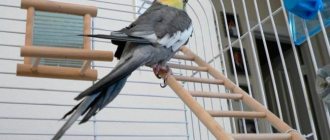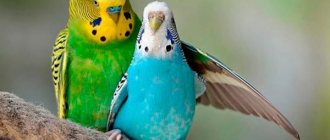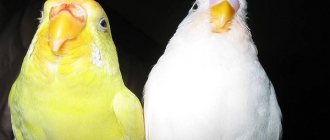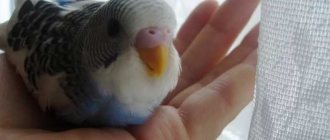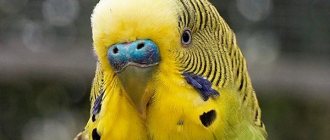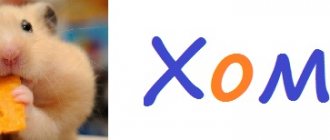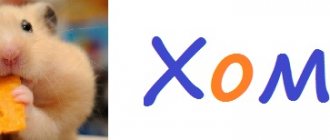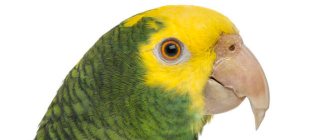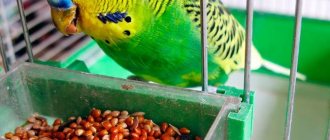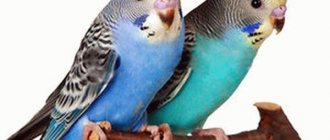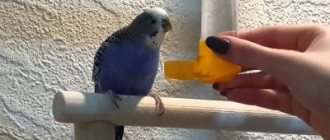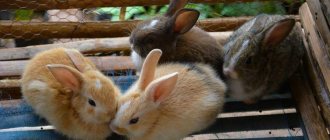- doors open from top to bottom,
doors open from bottom to top,
Fans believe that not all options are equally good. Often, after cleaning, owners forget to close the door of the parrot's house. In the case of the fourth option, this can be avoided, because the door itself lowers and closes. You can make a cage for your feathered pet yourself
Why is a good cage important?
Deciding to get a budgie raises a number of questions, one of them being how to choose the best cage for a budgie.
If your parrot roams freely around the house, it runs the risk of injury or illness. In addition, the bird may get stuck in a hard-to-reach place or be attacked by a pet. A cage is needed to make your budgie's life safe and comfortable. The bird can fly around the room, but under supervision.
A parrot's own cage is a place where it will feed, sleep, play, and hide from threats. If the shape, size and material of the home are chosen incorrectly, this can affect the well-being and life expectancy of the bird.
When buying a house, you should evaluate its practicality and safety. We must not forget about equipping it with the necessary elements: a drinking bowl and feeder, doors, perches, toys.
Before moving in a new resident, disinfection should be carried out. This is necessary to prevent infection. The rods, perches and feeders need to be washed and doused with boiling water. It is recommended to disinfect the remaining equipment.
Feeder and drinker for a parrot
These two accessories are essential parts of any parrot cage. If the size of the cage allows, then it is best to use three feeders for parrots: a water bowl, a bowl for dry foods (for example, grains), and a feeder for wet foods (for example, vegetables). Food bowls come in a variety of materials. Parrot feeders made of high-impact plastic, ceramic or stainless steel are safe to feed, but it is best to avoid galvanized metal bowls due to the potential for heavy metal toxicity.
Feeder and drinker
Parrots should always have access to clean, filtered water. Quite often, large parrots, such as Amazons, confuse the water bowl with the toilet, so you need to change the water several times a day. For such parrots, he recommends purchasing bowls with a “hood” or installing special closed drinking bowls , as in the photo. Such drinking bowls for parrots, despite the fact that they do not appear to be dirty, require changing the water at least once a day.
Video: automatic feeder for parrots
For large cages, many owners buy a special mesh stand . You can periodically place slices of vegetables on such a grid: corn, carrots, cherry tomatoes, broccoli; pea pod. Green beans, an orange slice, a slice of banana, Brussels sprouts, pieces of sweet potato, zucchini - all this will certainly find its use.
Of course, more treats end up at the bottom of the cage, but still the parrot spends time with pleasure and eats those pieces that it considers necessary.
Dimensions
To independently determine what size the cage will be for one parrot or several birds, the owner must take into account the minimum dimensions of the structure.
Important: A pair of budgies requires twice as much space. Housing parameters depend on the size of the birds.
- The width of the house is calculated so that the bird can spread its wings without touching the bars.
- The height is selected taking into account free movement inside.
The length of the cage is usually at least 40 - 45 cm. With this size, two or three perches can be strengthened at different levels. The bird needs space to fly between perches without touching the bars.
The minimum cage sizes for one budgerigar and a pair of birds are summarized in the table.
| Design dimensions in centimeters | ||
| Options | For one budgie | For a couple of parrots |
| Length | 40 | 60 |
| Width | 25 | 30 |
| Height | 30 | 40 |
The arrangement of the rods should be cross: horizontal and vertical direction, and the distance between them is 10 - 15 mm.
Recommended Models
Our online pet store offers the largest range of cages for parrots with delivery throughout Russia. Below is a list of popular apartments.
Close
Ferplast Piano 4
Rating
4.9 out of 5 RUB 6,991.00
Dimensions: 59x33x55 cm
Add to My Wishlist
Add to cart
Quick view
Close
Savic Primo 50
Rating
4.5 out of 5 RUB 5,981.00
Dimensions: 65x38x56.5cm
Add to My Wishlist
Add to cart
Quick view
Close
Ferplast Piano 3
Rating
4.78 out of 5 RUB 5,904.00
Dimensions: 50x30x52.5 cm
Add to My Wishlist
Add to cart
Quick view
Close
Savic Primo 60 Open Empire
Rating
5 out of 5 RUB 12,239.00
Dimensions: 80x50x95cm
Add to My Wishlist
Add to cart
Quick view
Close
Inter-Zoo Nina
Rating
4.6 out of 5 RUB 6,313.00 – RUB 6,484.00
Dimensions: 54x34x74 cm
Add to My Wishlist
Choose …
Quick view
Close
Ferplast Palladio 4
Rating
4.84 out of 5 RUB 7,558.00
Dimensions: 59x33x69 cm
Add to My Wishlist
Add to cart
Quick view
Not available
Close
Triol 7005
Rating
4 out of 5 RUB 2,722.00
Dimensions: 43×30.5×58 cm
Add to My Wishlist
More details
Quick view
Close
Inter-Zoo Eliza
Rating
4.22 out of 5 RUB 6,653.00 – RUB 6,828.00
Dimensions: 54x34x75 cm
Add to My Wishlist
Choose …
Quick view
Close
IMAC Tasha with partition
Rating
4.5 out of 5 RUB 10,681.00
Cage dimensions: 80.5x49x65 cm
Add to My Wishlist
Add to cart
Quick view
Close
IMAC Irene 4
Rating
4.31 out of 5 RUB 7,099.00
Dimensions: 59x38x56 cm
Add to My Wishlist
Add to cart
Quick view
Close
IMAC Camilla
Rating
5 out of 5 RUB 6,887.00 – RUB 7,753.00
Dimensions: 50x30x57/129 cm
Add to My Wishlist
Choose …
Quick view
Close
Inter-Zoo Elena
7 615,00₽
Dimensions: 54x39x71 cm
Add to My Wishlist
Add to cart
Quick view
Form
In pet stores you can see cages of various shapes and sizes. They are rectangular, square, round. There are buildings of complex shape, with flat or convex roofs.
Veterinarians and ornithologists believe that a round cage is the wrong choice. This shape makes the bird feel unprotected and interferes with proper orientation in space.
- Round and oval. They have one significant drawback: in case of fright or stress, the parrot tends to hide in a corner and wait out the anxiety, but in a round design this opportunity is not available.
- Square and rectangular designs are more comfortable. In them, parrots can move along a flat bottom. These birds, in nature and at home, climb and jump a lot. In addition, in houses of classic shapes it is convenient to attach perches, toys, and mirrors. Parrots have easy access to them.
- Complex buildings are semicircular, with projections and arches, and have intricate roofs. Their only advantage is their original appearance, which may be important to the owner, but not to the bird. The comfort of birds staying in such a cage is questionable. It is difficult to remove and clean.
Veterinarians believe that the classic rectangular shape is suitable for parrots. For some birds, due to their temperamental characteristics, housing can be selected individually.
Perches and swings
We don't always think about the comfort for the paws of our feathered friends. But parrots use them 24 hours a day, even when they sleep. It is best if the cage can accommodate several perches of different sizes. Natural wooden branch perches for parrots are preferable to plastic ones , because... have natural roughness. Plastic perches are too smooth and uncomfortable for the bird. In this case, the accessory can be additionally sanded to give it an uneven surface. Sisal ropes are comfortable for the bird, but you need to keep an eye on the surface so that they do not become too loose so that the parrot can hang on. You should also choose a swing from affordable and high-quality materials: a round fabric ring with a perch for a parrot.
You can equip the cage with natural wood
Many owners prefer swings made of stainless steel, rubber and rings with impact-resistant plastic. If you choose rubberized products, you should make sure that the parrot does not bite or swallow pieces; If you still notice a bad habit, it is better to remove this accessory from the cage.
Acceptable Materials
Birds love to chew on perches, toys and twigs. To prevent toxic substances from entering the body, the parrot's cage must be made of safe materials.
Important: High quality stainless steel is considered the best material. It is not subject to oxidation and does not rust.
Cheap house models made from materials of dubious quality threaten the health of pets. Galvanized rods can cause poisoning to a parrot. No less dangerous is copper, which quickly oxidizes. Its oxides act as a strong poison on birds.
Wooden parrot cages are only suitable for temporary housing. Budgerigars gnaw through them with ease. Wood absorbs moisture, becoming a favorable environment for the growth of bacteria.
A good option is a plastic structure. This material is non-toxic, but is susceptible to high temperatures. Therefore, houses made from it cannot be washed with hot water.
Is it possible to make a house with your own hands?
Making a cage yourself is a labor-intensive task that requires carpentry skills. Designs of this type are not suitable for beginners as a test of the pen. In this case, it is much more practical to look at some budget solution and modify it at your own discretion.
The simplest homemade option is a combined design: wooden frame and metal mesh . The drawing can be copied from factory solutions, which can be studied either in the nearest pet store or in an online store. The main thing is that after assembly there are no sharp or protruding elements left (screws, rods, etc.).
It is also useful to read: Diet of a budgerigar
Location
A parrot's cage should not be placed in the following places:
- in a draft;
- under direct sunlight;
- near heating devices;
- next to gas burners;
- at an open window;
- near working electronics.
One side of the house should be leaned against the wall. This will provide the bird with a sense of security and relieve it from unnecessary stress. Sometimes bird “apartments” are placed on special stands.
Important: How to install the cage correctly? The height should be at eye level. If it is placed too low, the birds become anxious when they see the owner's movements. If it is high, the pets will feel superior and problems will arise with taming.
Arrangement
When arranging a cage for budgies, safety comes first. In addition to the fact that the equipment must be of high quality, an additional condition for it is ease of maintenance.
Drinkers and feeders
Dishes should be selected taking into account the size of the bird. It must be ensured that it can be easily removed through the door. Water can be poured not into bowls, but into bottle-type sippy cups.
Perches
The optimal diameter of perches for budgerigars is 15 mm. The material from which they are made varies. Plastic attachments are very hard and cause paw diseases. Veterinarians find volcanic pumice perches helpful. This is a natural material that helps to grind down claws. A good gift for a pet can be a perch made with your own hands from a branch of a deciduous tree.
Doors
Experienced poultry farmers recommend purchasing houses with doors that open to the side or go down. For active birds trying to get out, doors with a guillotine mechanism - sliding up and down along the bars - are dangerous.
The dimensions of the door must be such that a person’s hand along with the bird fits into the hole. When considering options for houses, you need to pay attention to the number of doors. In addition to the main door, an additional one is needed, which serves as the entrance to the bathing area or nesting box.
Toys
Despite all the variety of toys, it is impossible to find absolutely safe accessories. Accessories must match the size of the bird and be easy to use. Suitable equipment include bells, mirrors, swings, ladders, and ropes.
What places should you not choose to place a parrot cage?
Your pet’s comfortable state of health, its state of health, and mood depend on the choice of place where the cage with your feathered pet will be located. Experts say that there are restrictions on where you should not place your feathered pet’s home:
- near objects that make loud noise (household appliances, TV). Such noise can simply unsettle the parrot and frighten it.
- next to heating devices (radiators, convectors). Temperature changes and too hot air can negatively affect the pet’s appearance and condition.
- in places where drafts are possible. Parrots can tolerate cold temperatures, but drafts can cause deterioration in your pet's health.
- near devices that emit radio waves. Invisible radiation can have a very negative impact on the condition and well-being of your feathered friend.
- in places where the sun's rays often hit. Warmth and sun are good, but the parrot must have a place where it can hide from direct hot rays.
- near the window. Here the feathered pet can acutely sense temperature changes. and if the window faces the road, then it is impossible to avoid loud noise that can frighten the parrot.
- in the kitchen. In the kitchen, in addition to appliances with electromagnetic radiation, windows are often opened during cooking, which leads to drafts. In addition, when cooking indoors it becomes hot, there is a lot of fumes, which will not improve the well-being of your feathered pet.
